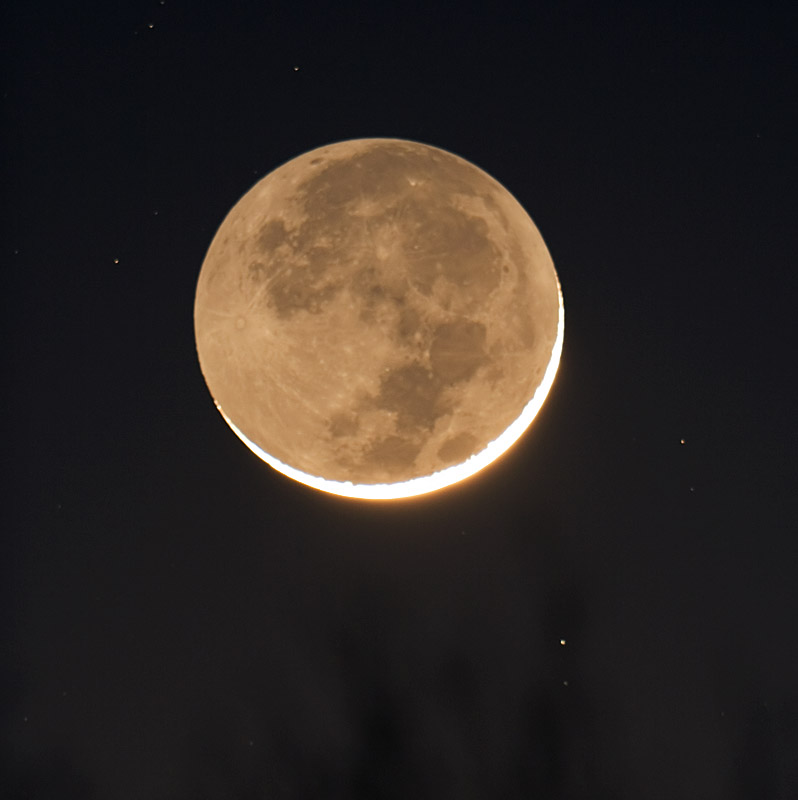
Earthshine!

Earthshine on 3.27% illuminated moon, around 33 hours and 48 minutes old, Jan 30,2006, HAS site, about 7:04 p.m. You can see that it's right above the treetops. Several stars visible in this 8 second exposure at ISO 400; the brightest is 39 Aquarii at 6.04 mag. lower right. Takahashi TOA 130 (a 5" APO refractor telescope) with a Canon EOS D20a DSLR camera. Other Pictures from this night at the HAS site.
Please be sure to scroll down to check out the "thin crescent" version, and also to read more information about the moon from our local expert, Don Pearce. This picture is featured in this astronomy club's newsletter (page 5, Thin Moons article by Dan Williams).
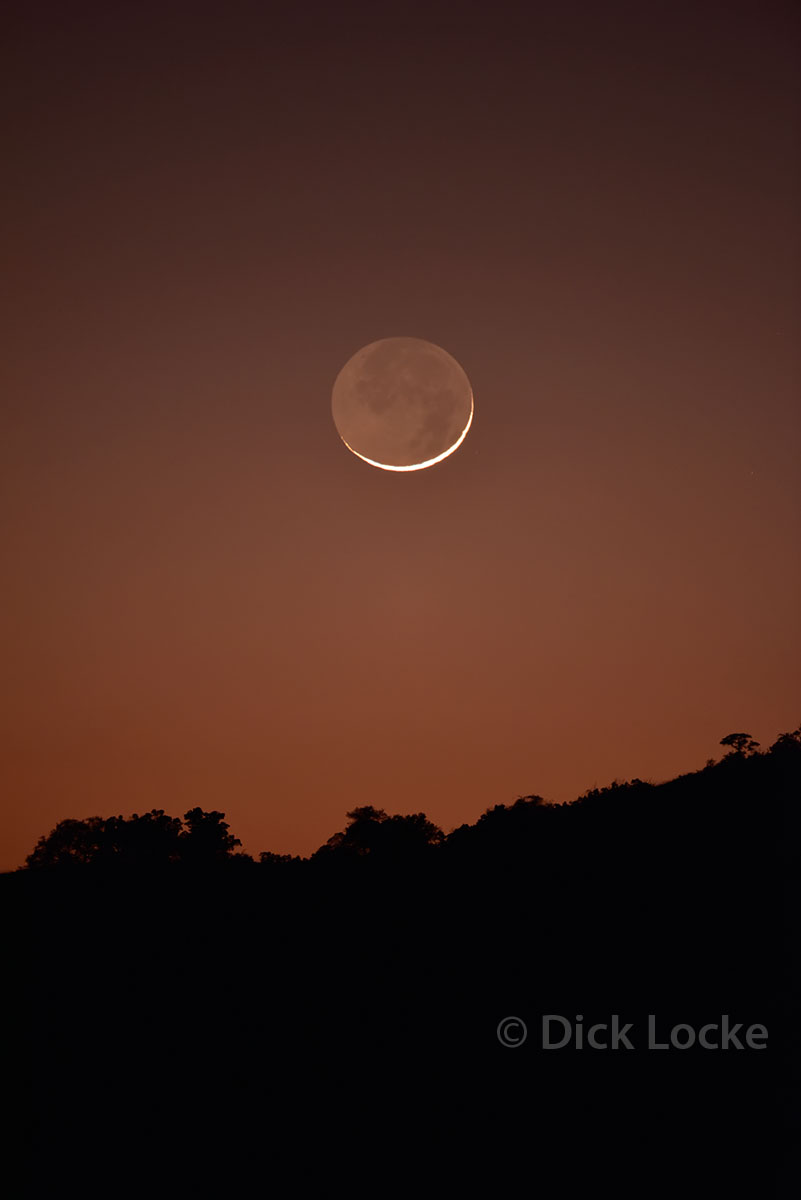
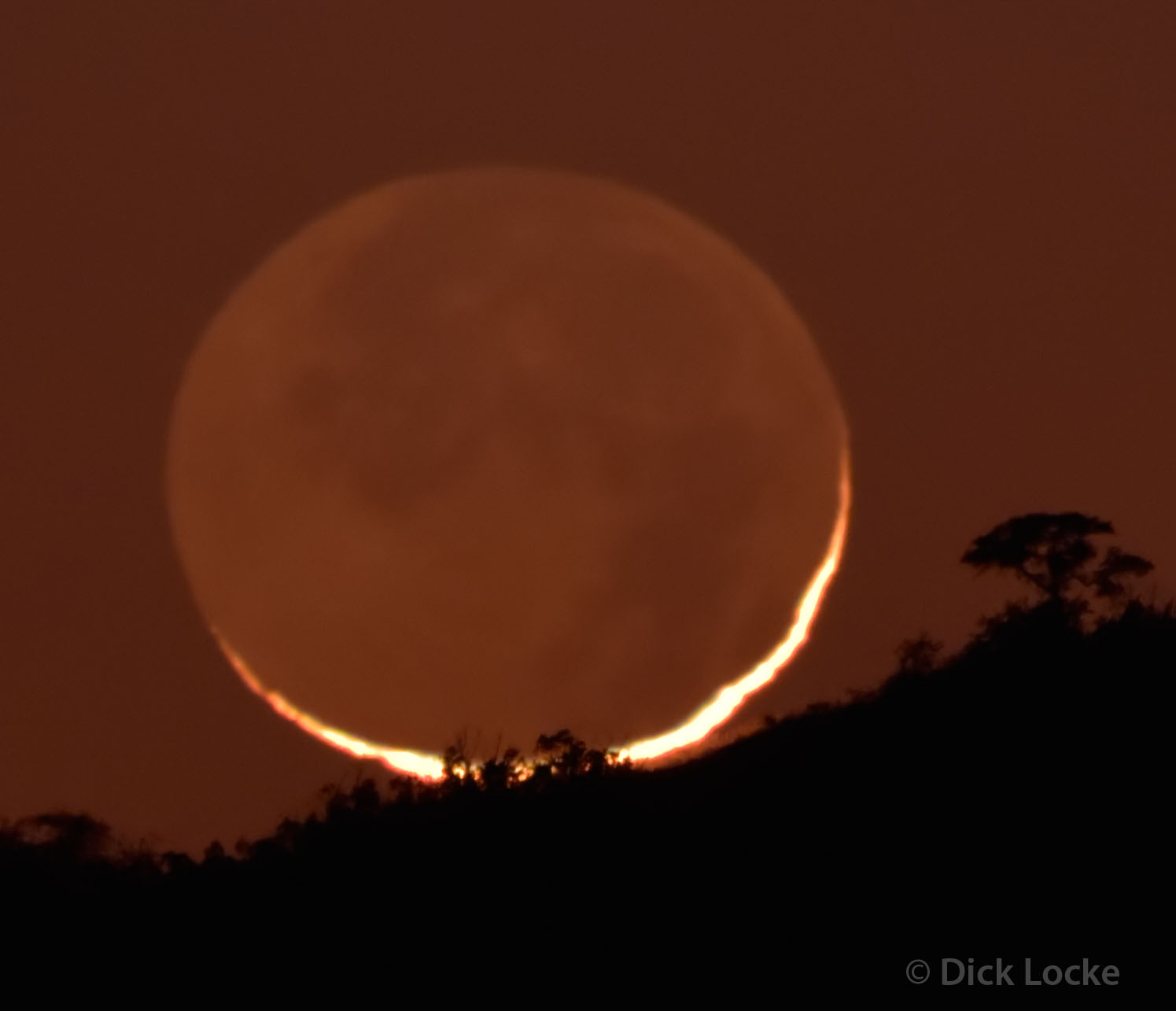
Also from 11/30/16
 The Thinnest of the Thin: Moons Within 24 Hours of New Here |  "MAIN" MOON Pictures page is here |  Planet & Moon Alignment Pictures here |
| ||
 NHAC - moon and mercury pictures |
The moon above was about 32 hours old, about 2.5% illuminated. |  Moon & Planetary Landscapes |
 Thin Moon Moonset at Sammy Neal's, 7:51 p.m. 9/27/03. The moon is ~45 hours old, just over 5% illuminated. Nikon D100 DSLR, Takahashi FS-102 telescope with Nikon TC-301 2x teleconverter for effective focal length of 1640 mm @f32, 1.6 sec. exposure at ISO 200 setting. |  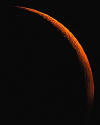 Above: A couple more from 9/2703, taken just as the moon set into the trees. The "Earthshine" is 30 sec at f8, and the red crescent is 4 sec at f32. |
|
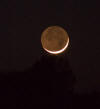 2-day moonset from West Texas | 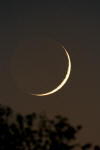 Earthshine on the moon from the Neal Site in Dolen TX. |  3 day old moon 3/12/2005 |
Taken at 6:50 p.m. 1/30/2006, 3.22% illuminated, about 33 hrs and 34 minutes old. 1/100 second exposure at ISO 400, same equipment as above. Processing: The blue channel had the most detail, so I applied it into the luminosity channel in Lab at 75%. I steepened the curve and sharpened lightly in luminosity. Click Image (or here) for a bigger version.
Here is some information about the 1/30/06 moon from Don Pearce, used with his kind permission:
"Tonight I observed one of the easiest "first crescents" I'll ever see. The reason was that new Moon occurred about 8:15 am Sunday, too late for a Sunday night observation (it was totally impossible from our longitude zone (Houston, TX, USA -Dick Locke) , but very easy (and I might add visually pleasing) tonight. In fact I set up a few minutes before sunset, and as soon as I looked through the binos it was there, an enormous crescent spanning a 150 degrees illuminated arc (about 2:30 to 7:30 o'clock). The time was 5:55pm, about 2 minutes before sunset, and I observed it naked eye at 5:57 pm, right at sunset. Its age was 33hrs and 39 minutes and I was at the familiar Braes Bayou site..............Don Pearce"
More information, responding to a question about the moon's apparent brightness:
"Often, the thin crescents over 30 hrs. have the "best" earthshine because the right circumstances prevail. When the elongation is over say, 17 degrees (it was over 19 for last night's ), but less than, say, about 35 degrees, you have enough contrast to see good earthshine, but the brightness of the crescent is still not overwhelming enough to diminish the effect. Another factor in earthshine is the percent of cloud cover on the the Earth's facing hemisphere; the more cloud cover, the higher the albedo, and , consequently, the brighter the earthshine......Don Pearce"

Copyright © by Dick Locke. All Rights Reserved.
Contact and Image Use Information